 On March 23, Rishi Sunak, the UK’s Chancellor of the Exchequer, delivered his Spring Statement, in which he announced changes to various taxes and grants. These measures were made against the background of rising inflation and falling living standards.
On March 23, Rishi Sunak, the UK’s Chancellor of the Exchequer, delivered his Spring Statement, in which he announced changes to various taxes and grants. These measures were made against the background of rising inflation and falling living standards.
CPI inflation, currently at 6.2%, is still rising and the Office for Budget Responsibility forecasts that inflation will average 7.4% this year. The poor spend a larger proportion of their income on energy and food than the rich. With inflation rates especially high for gas, electricity and basic foodstuffs, the poor have been seen their cost of living rise by considerably more than the overall inflation rate.
According to the OBR, the higher inflation, by reducing real income and consumption, is expected to reduce the growth in real GDP this year from the previously forecast 6% to 3.8% – a much smaller bounce back from the fall in output during the early stages of the pandemic. Despite this growth in GDP, real disposable incomes will fall by an average of £488 per person this year. As the OBR states:
With inflation outpacing growth in nominal earnings and net taxes due to rise in April, real living standards are set to fall by 2.2 per cent in 2022/23 – their largest financial year fall on record – and not recover their pre-pandemic level until 2024/25.
Fiscal measures
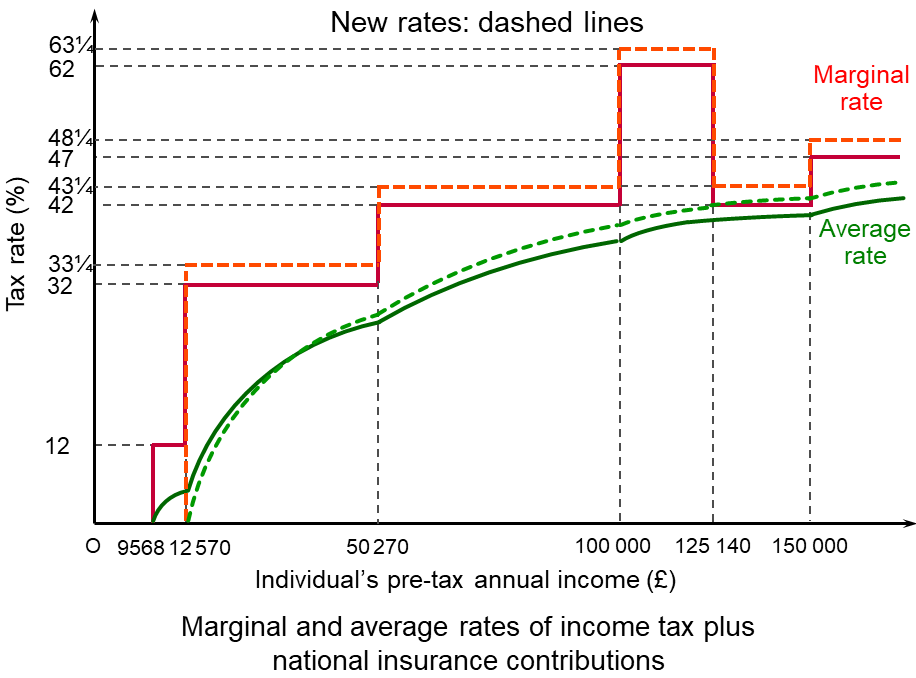 The Chancellor announced a number of measures, which, he argued, would provide relief from rises in the cost of living.
The Chancellor announced a number of measures, which, he argued, would provide relief from rises in the cost of living.
- Previously, the Chancellor had announced that national insurance (NI) would rise by 1.25 percentage points this April. In the Statement he announced that the starting point for paying NI would rise from a previously planned £9880 to £12 570 (the same as the starting point for income tax). This will more than offset the rise in the NI rate for those earning below £32 000. This makes the NI system slightly more progressive than before. (Click here for a PowerPoint of the chart.)
- A cut in fuel duty of 5p per litre. The main beneficiaries will be those who drive more and those with bigger cars – generally the better off. Those who cannot afford a car will not benefit at all, other than from lower transport costs being passed on in lower prices.
- The 5% VAT on energy-saving household measures such as solar panels, insulation and heat pumps will be reduced to zero.
- The government’s Household Support Fund will be doubled to £1bn. This provides money to local authorities to help vulnerable households with rising living costs.
- Research and development tax credits for businesses will increase and small businesses will each get another £1000 per year in the form of employment allowances, which reduce their NI payments. He announced that taxes on business investment will be further cut in the Autumn Budget.
- The main rate of income tax will be cut from 20% to 19% in two years’ time. Unlike the rise in NI, which only affects employment and self-employment income, the cut in income tax will apply to all incomes, including rental and savings income.
Fiscal drag
 The Chancellor announced that public finances are stronger than previously forecast. The rapid growth in tax receipts has reduced public-sector borrowing from £322 billion (15.0 per cent of GDP) in 2020/21 to an expected £128 billion (5.4 per cent of GDP) in 2021/22, £55 billion less than the OBR forecast in October 2021. This reflects not only the growth in the economy, but also inflation, which results in fiscal drag.
The Chancellor announced that public finances are stronger than previously forecast. The rapid growth in tax receipts has reduced public-sector borrowing from £322 billion (15.0 per cent of GDP) in 2020/21 to an expected £128 billion (5.4 per cent of GDP) in 2021/22, £55 billion less than the OBR forecast in October 2021. This reflects not only the growth in the economy, but also inflation, which results in fiscal drag.
Fiscal drag is where rises in nominal incomes mean that the average rate of income tax rises. As tax thresholds for 2022/23 are frozen at 2021/22 levels, a greater proportion of incomes will be taxed at higher rates and tax-free allowances will account for a smaller proportion of incomes. The higher the rate of increase in nominal incomes, the greater fiscal drag becomes. The higher average rate of tax drags on real incomes and spending. On the other hand, the extra tax revenue reduces government borrowing and gives the government more room for extra spending or tax cuts.
The growth in poverty
 With incomes of the poor not keeping pace with inflation, many people are facing real hardship. While the Spring Statement will provide a small degree of support to the poor through cuts in fuel duty and the rise in the NI threshold, the measures are poorly targeted. Rather than cutting fuel duty by 5p, a move that is regressive, removing or reducing the 5% VAT on gas and electricity would have been a progressive move.
With incomes of the poor not keeping pace with inflation, many people are facing real hardship. While the Spring Statement will provide a small degree of support to the poor through cuts in fuel duty and the rise in the NI threshold, the measures are poorly targeted. Rather than cutting fuel duty by 5p, a move that is regressive, removing or reducing the 5% VAT on gas and electricity would have been a progressive move.
Benefits, such as Universal Credit and the State Pension, are uprated each April in line with inflation the previous September. When inflation is rising, this means that benefits will go up by less than the current rate of inflation. This April, benefits will rise by last September’s annual inflation rate of 3.1% – considerably below the current inflation rate of 6.2% and the forecast rate for this year of 7.4%. This will push many benefit recipients deeper into poverty.
One measure rejected by Rishi Sunak is to impose a temporary windfall tax on oil companies, which have profited from the higher global oil prices. Such taxes are used in Norway and are currently being considered by the EU. Tax revenues from such a windfall tax could be used to fund benefit increases or tax reductions elsewhere and these measures could be targeted on the poor.
Articles
- Overview of the March 2022 Economic and fiscal outlook
Office for Budget Responsibility (23/3/22)
- Spring Statement: Key points at a glance
BBC News (23/3/22)
- Spring statement 2022: key points at a glance
The Guardian, Richard Partington and Jessica Elgot (23/3/22)
- People face biggest drop in living standards since 1956
BBC News (23/3/22)
- Spring Statement: Rishi Sunak accused of not doing enough for poorest households
BBC News (24/3/22)
- Chancellor provides minimal help to households on cost of living crisis
Financial Times, Chris Giles (23/3/22)
- Britain’s poorest left to bear brunt of squeeze on cost of living
Financial Times, Delphine Strauss (23/3/22)
- Spring statement: How does Rishi Sunak’s national insurance change affect you?
Sky News, Daniel Dunford and Ganesh Rao (24/3/22)
- Spring Statement 2022 – An initial response from IFS researchers
Institute for Fiscal Studies Press Release, Stuart Adam, Carl Emmerson, Paul Johnson, Helen Miller, Isabel Stockton, Tom Waters and Ben Zaranko (23/3/22)
- Chancellor prioritises his tax cutting credentials over low-and-middle income households with £2 in every £3 of new support going to the top half
Resolution Foundation press release (23/3/22)
- Richest handed £480 boost in Spring Statement, say researchers
Politics.co.uk (23/3/22)
- UK’s most vulnerable face crunch as Rishi Sunak helps better-off
The Guardian, Larry Elliott and Heather Stewart (23/3/22)
- Rishi Sunak tackled over failure to help poorest families
The Guardian, Richard Partington and Aubrey Allegretti (24/3/22)
- A Spring Statement for White Wealth Drivers
Byline Times, Stan Norris (23/3/22)
- Rishi Sunak’s Fiscal Drag Race
Evening Standard, Jack Kessler (23/3/22)
- Rishi Sunak fails to address the hit to living standards
Financial Times, Martin Wolf (23/3/22)
- Why Rishi Sunak refused a windfall tax on oil and gas companies
The New Statesman, Philippa Nuttall (23/3/22)
OBR data and analysis
Questions
- Are the changes made to national insurance by the Chancellor progressive or regressive? Could they have been made more progressive and, if so, how?
- What are the arguments for and against cutting income tax from 20% to 19% in two years’ time rather than reversing the current increases in national insurance at that point?
- What will determine how rapidly (if at all) public-sector borrowing decreases over the next few years?
- What are automatic fiscal stabilisers? How does their effect vary with the rate of inflation?
- Examine the public finances of another country. Are the issues similar to those in the UK? Recommend fiscal policy measures for your chosen country and provide a justification.
 Households are expected to see further rises in the cost of living after the annual inflation rate climbed for a 13th month to its highest point in almost 30 years. This will put further pressure on already stretched household budgets. The increase reflects a bounceback in demand for goods and services after lockdowns, when prices fell sharply. It also reflects the impact of supply-chain disruptions as Covid-19 hit factory production and global trade.
Households are expected to see further rises in the cost of living after the annual inflation rate climbed for a 13th month to its highest point in almost 30 years. This will put further pressure on already stretched household budgets. The increase reflects a bounceback in demand for goods and services after lockdowns, when prices fell sharply. It also reflects the impact of supply-chain disruptions as Covid-19 hit factory production and global trade.
The biggest concern, however, is the impact it will have on those already hard-pressed families across the UK. According to official figures, prices are rising at similar rates for richer and poorer households. However, household income levels will determine personal experiences of inflation. Poorer households find it harder to cope than richer families as essentials, such as energy and food, form a larger proportion of their shopping basket than discretionary items. On average the lowest-income families spend twice as much proportionately on food and housing bills as the richest. So low-income households, if they are already spending mainly on essentials, will struggle to find where to cut back as prices rise.
Latest Inflation figures
Latest figures from the ONS show that the Consumer Prices Index (CPI) rose by 5.5% in the year to January 2022, with further increases in the rate expected over the next couple of months. In measuring inflation, the ONS takes a so-called ‘basket of goods, which is frequently updated to reflect changes in spending patterns. For example, in 2021, hand sanitiser and men’s loungewear bottoms were added, but sandwiches bought at work were removed.
Annual CPI inflation is announced each month, showing how much the weighted average of these prices has risen since the same date last year. The weighted average is expressed as an index, with the index set at 100 in the base year, which is currently 2015.
 Consumers would not normally notice price rises from month to month. However, prices are now rising so quickly that it is clear for everyone to see. What is more, average pay is not keeping up. There are workers in a few sectors, such as lorry drivers, who are in high demand, and therefore their wages are rising faster than prices. But the majority of workers won’t see such increases in pay. In the 12 months to January, prices rose by 5.5% on average, but regular pay, excluding bonuses, on average rose by only 4.7%, meaning that they fell by 0.8% in real terms.
Consumers would not normally notice price rises from month to month. However, prices are now rising so quickly that it is clear for everyone to see. What is more, average pay is not keeping up. There are workers in a few sectors, such as lorry drivers, who are in high demand, and therefore their wages are rising faster than prices. But the majority of workers won’t see such increases in pay. In the 12 months to January, prices rose by 5.5% on average, but regular pay, excluding bonuses, on average rose by only 4.7%, meaning that they fell by 0.8% in real terms.
The Bank of England has warned that CPI inflation could rise to 7% this year and some economists are forecasting that it could be almost 8% in April.
Why are costs rising?
From the weekly food shop, to filling up cars, to heating our homes, the cost of living is rising sharply around the world. Global inflation is at its highest since 2008. Some of the reasons why include:
- Rising energy and petrol prices
 Oil prices slumped at the start of the pandemic, but demand has rocketed back since, and oil prices have hit a seven-year high. The price of gas has also shot up, leaving people around the world with eye-watering central heating bills. Home energy bills in the UK are set to rise by 54% in April when Ofgem, the energy regulator, raises the price cap.
Oil prices slumped at the start of the pandemic, but demand has rocketed back since, and oil prices have hit a seven-year high. The price of gas has also shot up, leaving people around the world with eye-watering central heating bills. Home energy bills in the UK are set to rise by 54% in April when Ofgem, the energy regulator, raises the price cap.
- Goods shortages
During the pandemic, prices of everyday consumer goods increased. Consumers spent more on household goods and home improvements because they were stuck at home, couldn’t go out to eat or go on holiday. Manufacturers in places such as Asia have struggled to keep up with the demand. This has led to shortages of materials such as plastic, concrete and steel, driving up prices. Timber cost as much as 80% more than usual in 2021 in the UK.
- Shipping costs
Global shipping companies have been overwhelmed by surging demand after the pandemic and have responded by raising shipping charges. Retailers are now having to pay a lot more to get goods into stores. These prices are now being passed on to consumers. Air freight fees have also increased, having been made worse by a lorry driver shortage in Europe.
- Rising wages
During the pandemic many people changed jobs, or even quit the workforce – a problem exacerbated in the UK by Brexit as many European workers returned to their home countries. Firms are now having problems recruiting staff such as drivers, food processors and restaurant waiters. This has resulted in companies putting up wages to attract and retain staff. Those extra costs to employers are again being passed on to consumers.
- Extreme weather impact
Extreme weather in many parts of the world has contributed to inflation. Global oil supplies took a hit from hurricanes which damaged US oil infrastructure. Fierce storms in Texas also worsened the problems in meeting the demand for microchips. The cost of coffee has also jumped after Brazil had a poor harvest following its most severe drought in almost a century.
- Trade barriers
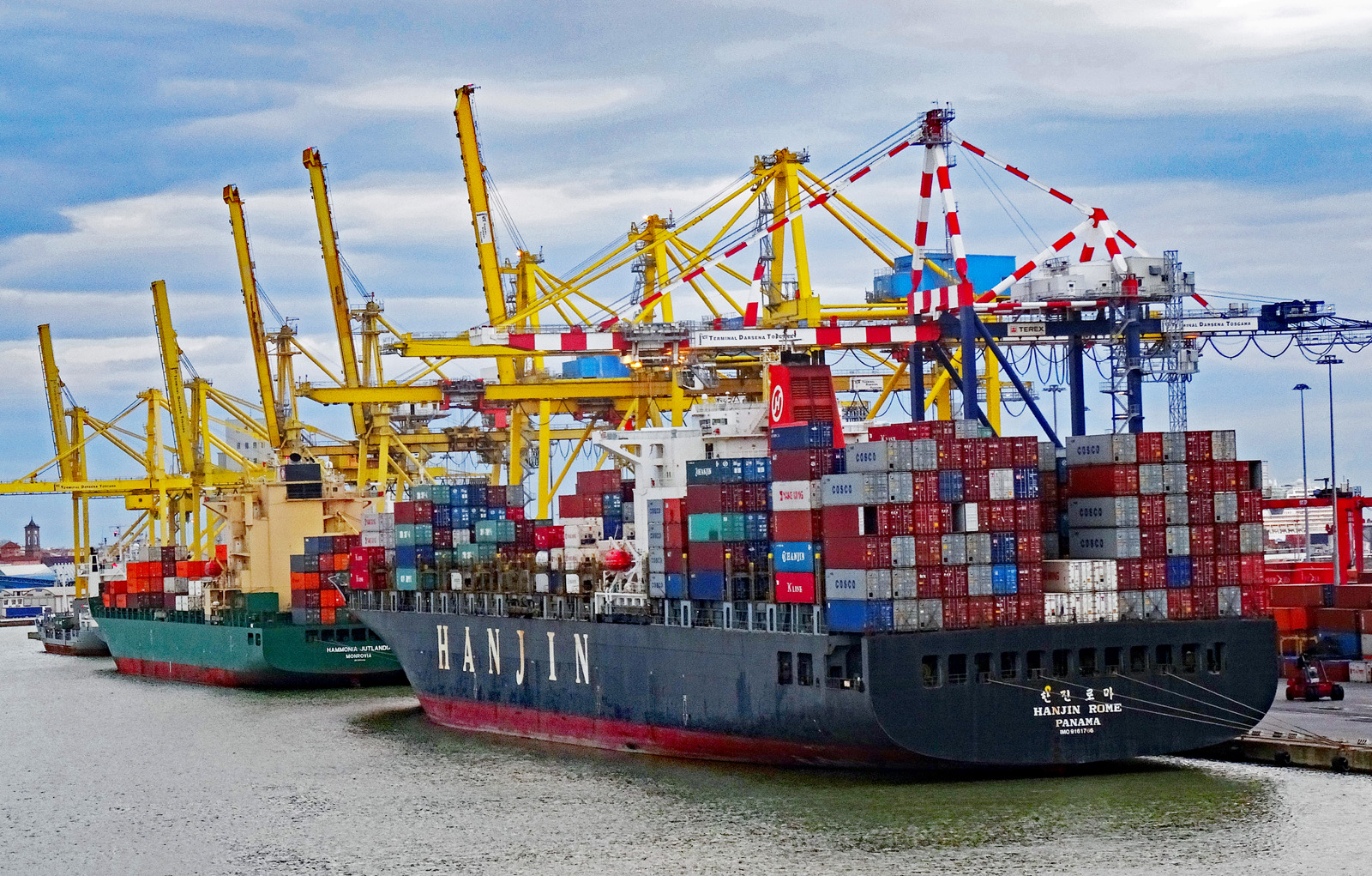 More costly imports are also contributing to higher prices. New post-Brexit trading rules are estimated to have reduced imports from the EU to the UK by about a quarter in the first half of 2021. In the USA, import tariffs on Chinese goods have almost entirely been passed on to US customers in the form of higher prices. Chinese telecoms giant Huawei said last year that sanctions imposed on the company by the USA in 2019 were affecting US suppliers and global customers.
More costly imports are also contributing to higher prices. New post-Brexit trading rules are estimated to have reduced imports from the EU to the UK by about a quarter in the first half of 2021. In the USA, import tariffs on Chinese goods have almost entirely been passed on to US customers in the form of higher prices. Chinese telecoms giant Huawei said last year that sanctions imposed on the company by the USA in 2019 were affecting US suppliers and global customers.
- The end of pandemic support
Governments are ending the support given to businesses during the pandemic. Public spending and borrowing increased across the world leading to tax rises. This has contributed to rises in the cost-of-living, while most people’s wages have lagged behind.
Main concerns for the UK inflation
With rapidly rising prices, the economic decisions people will have to make are much harder. The main concerns for UK households include increases in energy costs, food prices, rent and interest rates on borrowing. All of these concerns come at a time when the government prepares to increase national insurance contributions for workers in April. There has been some pressure from MPs to scrap the tax rise so as to ease the pressure on living costs. It can be argued that there are fairer ways to increase taxes than through national insurance. However, the plan is relatively progressive, and scrapping the rise could be a badly targeted way of helping the poorest households with their energy bills.
Energy Bills
Electricity and gas bills for a typical household are expected to increase on average by £693 a year in April, which, as we have seen, is a 54% increase. Around 18 million households on standard tariffs will see an average increase from £1277 to £1971 per year. And around 4.5 million prepayment customers will see an average increase of £708 – from £1309 to £2017. Energy bills won’t rise immediately for customers on fixed rates, but many are likely to see a significant increase when their deal ends.
Bills are going up because the energy price cap is being raised. The energy price cap is an example of a maximum price being imposed on the market; it is the maximum price suppliers in England, Wales and Scotland can charge households for their energy. Energy firms can increase bills by 54% when the new cap is introduced in April. The price cap is currently reviewed every 6 months and it is expected that that prices will rise again in October.
Energy price rises are likely to hit Britain’s poorest households the hardest as they spend proportionately more of their income on energy, a problem exacerbated by many living in poorly insulated homes. More people are thus expected to find themselves facing fuel poverty. This means that they spend a disproportionate amount of their income on energy and cannot afford to heat their homes adequately. According to the Resolution Foundation, the poorest will see their energy spend rise from 8.5% to 12% of their total household budget, three times the percentage for the richest.
The way fuel poverty is measured varies around the UK. In Scotland, a household is in fuel poverty if more than 10% of its income is spent on fuel and its remaining income isn’t enough to maintain an adequate standard of living. It is expected that the number of homes facing ‘fuel stress’ across the UK will treble to 6.3 million after April. It will, however, have the greatest impact on pensioners, people in local authority housing and low-income single-adult households who on average could be forced to spend over 50% of their income on gas and electricity. The Resolution Foundation thinktank has warned that UK households are facing a ‘cost of living catastrophe’.
Food
 Low-income households also spend a larger proportion than average on food and will therefore be relatively more affected by increases in food prices. Food and non-alcoholic drink prices were up by 4.2% in the year to December 2021. The Monetary Policy Committee has stated that food price inflation is expected to increase in coming months, given higher input costs. It has been estimated by the thinktank, Food Foundation, that 4.7m Britons, equivalent to 8.8% of the population, are struggling to feed themselves and are regularly going a day without eating.
Low-income households also spend a larger proportion than average on food and will therefore be relatively more affected by increases in food prices. Food and non-alcoholic drink prices were up by 4.2% in the year to December 2021. The Monetary Policy Committee has stated that food price inflation is expected to increase in coming months, given higher input costs. It has been estimated by the thinktank, Food Foundation, that 4.7m Britons, equivalent to 8.8% of the population, are struggling to feed themselves and are regularly going a day without eating.
Supermarkets have also raised their concerns about future increases. Tesco’s chairman John Allan has predicted that the worst is yet to come, pointing to 5% as a likely figure for food price inflation by the spring. He cited high energy prices, both for Tesco and its suppliers, as a key factor behind the expected rise.
It has been observed that the Smart Price, Basics and Value range products offered by supermarkets as lower-cost alternatives are stealthily being extinguished from the shelves. This is leaving shoppers with no choice but to ‘level up’ to the supermarkets’ own better-quality branded goods – usually in smaller quantities at larger prices. The managing director of Iceland, Richard Walker, has stated that his stores are not losing customers to other competitors or to better offers, but to food banks and to hunger. This is a highly concerning statement given that 2.5m citizens were forced by an array of desperate circumstances to use food banks over the past year.
Rent
 Private rents are also rising at their fastest rate in five years, intensifying the increase in the cost of living for millions of households. Data from the ONS reveal that the average cost of renting in the UK rose by 2% in 2021. This was the largest annual increase since 2017. The East Midlands had the biggest increase in average rental prices, with tenants paying 3.6% more than a year earlier. However, due to falling demand for city flats during lockdown, as people favoured working from home, London had the smallest increase at 0.1%. Nevertheless, as Covid restrictions are removed, renters, including office workers and students, are now returning back to cities. This is now pushing up rental prices with demand outpacing supply.
Private rents are also rising at their fastest rate in five years, intensifying the increase in the cost of living for millions of households. Data from the ONS reveal that the average cost of renting in the UK rose by 2% in 2021. This was the largest annual increase since 2017. The East Midlands had the biggest increase in average rental prices, with tenants paying 3.6% more than a year earlier. However, due to falling demand for city flats during lockdown, as people favoured working from home, London had the smallest increase at 0.1%. Nevertheless, as Covid restrictions are removed, renters, including office workers and students, are now returning back to cities. This is now pushing up rental prices with demand outpacing supply.
The property website Zoopla found newly advertised rental prices were rising much faster across the UK. It said the average rent jumped 8.3% in the final three months of 2021 to £969 a month. This increase in rental prices, combined with the general rise in prices will place additional pressure on the government to increase support for vulnerable families. The housing charity, Shelter, has reported an increase in people who are struggling to pay their rent and even pay their electricity. With Covid-era protections having ended, if people struggle to pay, they are faced with eviction or even homelessness. There are calls for the government to support such people by reversing welfare cuts.
Insurer, Legal & General, has announced an additional investment over the next 5 years of £2.5bn on its ‘build to rent’ schemes. The aim is to provide more than 7000 purpose-built rental homes in UK towns and cities. L&G claims that the additional homes are part of the solution to the rental problem, with rent increases being capped at 5% for five years. However, sceptics claim the company is simply trying to cash in on the booming market and there are calls for further government action. The Joseph Rowntree Foundation claim that renters will struggle as rents in some areas have risen as much as 8%. Despite this, housing benefit has been frozen for two years and therefore there are calls for government to urgently relink housing benefit to the real cost of renting.
Articles
- UK inflation forecast to hit 8% in April amid cost of living crisis
The Guardian, Phillip Inman (16/2/22)
- Inflation: Seven reasons the cost of living is going up around the world
BBC News, Beth Timmins and Daniel Thomas (20/1/22)
- Why are gas bills so high and what’s the energy price cap?
BBC News (4/2/22)
- What is the UK’s inflation rate and why is the cost of living going up?
BBC News (16/2/22)
- In numbers: what is fuelling Britain’s cost of living crisis?
The Guardian, Richard Partington and Ashley Kirk (3/2/22)
- Rising cost of living in the UK
House of Commons Library, Research Briefing, Brigid Francis-Devine, Daniel Harari, Matthew Keep and Paul Bolton (8/2/22)
- Rising cost of living leaves 4.7mn Britons struggling to feed themselves
Financial Times, Bethan Staton (6/2/22)
- UK cost of living crisis merits a full response
Financial Times, The editorial board (3/2/22)
- UK cost of living crisis intensifies
Financial Times, Darren Dodd (19/1/22)
- The cost of living crisis – who is hit by recent price increases?
IFS, Peter Levell and Heidi Karjalainen (17/11/21)
- The cost of living crunch
IFS, Robert Joyce, Heidi Karjalainen, Peter Levell and Tom Waters (12/1/22)
- Fastest rent rise in five years adds to concerns over UK cost of living crisis
The Guardian, Georgina Quach (16/2/22)
Questions
- What other measures of inflation are used beside CPI inflation? How do they differ?
- If all consumers are facing approximately the same price increases for any given good or service, why are poor people being disproportionately hit by rising prices?
- For what reasons might the rate of inflation (a) rise further; (b) begin to fall?
- Examine a developed country other than the UK and find out how inflation is affecting its population. Is its experience similar to that in the UK? Does it differ in any way?
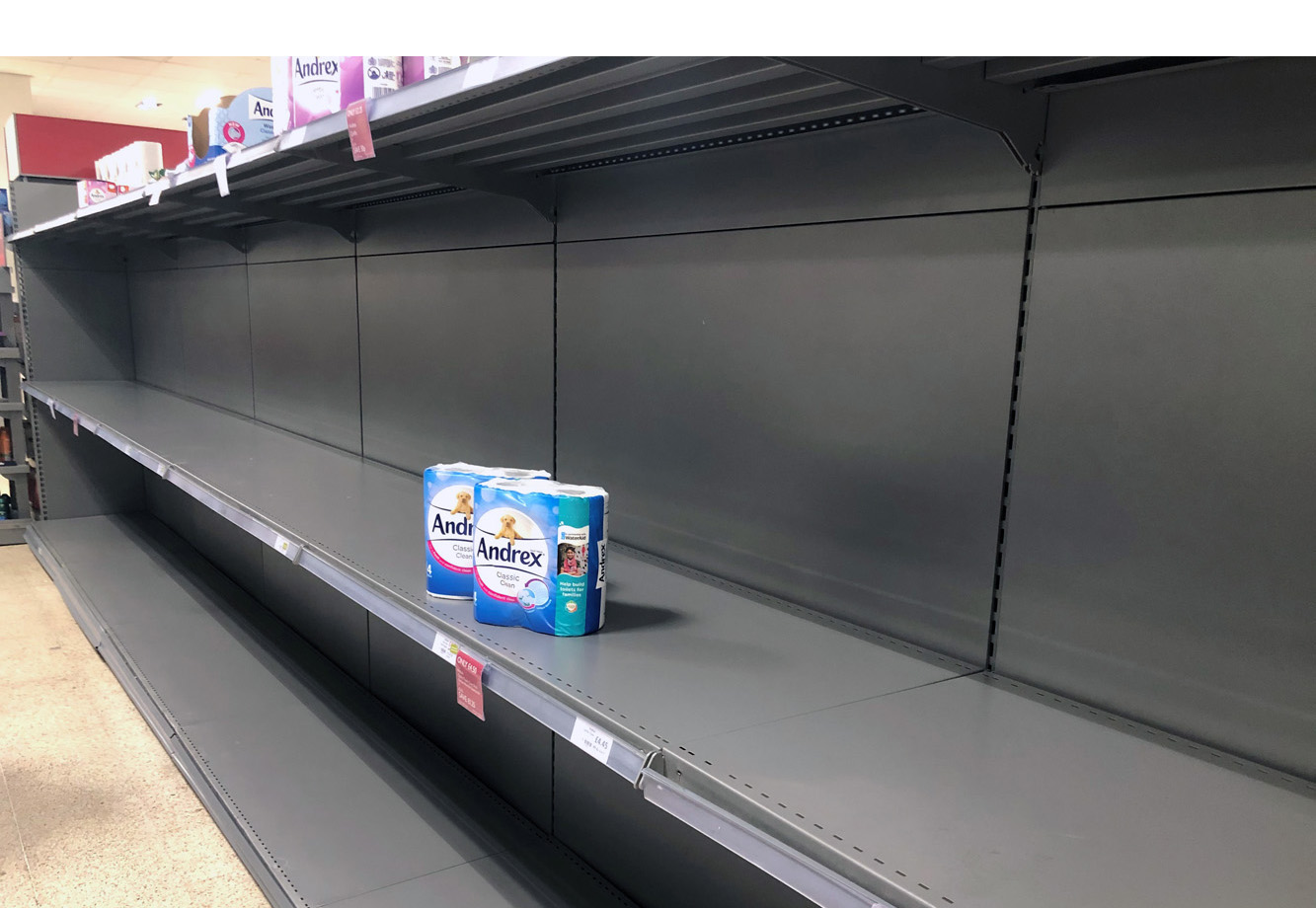 With the bounce-back from the pandemic, many countries have experienced supply-chain problems. For example, the shortage of lorry drivers in the UK and elsewhere (see the blog Why is there a driver shortage in the UK?) has led to empty shelves, fuel shortages and rising prices. The problem has been exacerbated by a lack of stock holding. Holding minimum stocks has been part of the modern system of ‘just-in-time’ (JIT) supply-chain management.
With the bounce-back from the pandemic, many countries have experienced supply-chain problems. For example, the shortage of lorry drivers in the UK and elsewhere (see the blog Why is there a driver shortage in the UK?) has led to empty shelves, fuel shortages and rising prices. The problem has been exacerbated by a lack of stock holding. Holding minimum stocks has been part of the modern system of ‘just-in-time’ (JIT) supply-chain management.
JIT involves involves highly integrated and sophisticated supply chains. Goods are delivered to factories, warehouses and shops as they are needed – just in time. Provided firms can be sure that they will get their deliveries on time, they can hold minimum stocks. This enables them to cut down on warehousing and its associated costs. The just-in-time approach to supply-chain management was developed in the 1950s in Japan and since the 1980s has been increasingly adopted around the world, helped more recently by sophisticated ordering and tracking software.
 If supply chains become unreliable, however, JIT can lead to serious disruptions. A hold-up in one part of the chain will have a ripple effect along the whole chain because there is little or no slack in the system. When the large container ship, the Ever Given, en route from Malaysia to Felixtowe, was wedged in the Suez canal for six days in March this year, the blockage caused shipping to be backed up. By day six, 367 container ships were waiting to transit the canal. The disruption to supply cost some £730m.
If supply chains become unreliable, however, JIT can lead to serious disruptions. A hold-up in one part of the chain will have a ripple effect along the whole chain because there is little or no slack in the system. When the large container ship, the Ever Given, en route from Malaysia to Felixtowe, was wedged in the Suez canal for six days in March this year, the blockage caused shipping to be backed up. By day six, 367 container ships were waiting to transit the canal. The disruption to supply cost some £730m.
JIT works well when sources of supply and logistics are reliable and when demand is predictable. The pandemic is causing many logistics and warehousing managers to consider building a degree of slack into their systems. This might involve companies having alternative suppliers they can call on, building in more spare capacity and having their own fleet of lorries or warehousing facilities that can be hired out when not needed but can be relied on at times of high demand.
When the ‘bounce back’ subsides, so may the current supply chain bottlenecks. But the rethinking that has been generated by the current problems may see new patterns emerge that make supply chains more flexible without becoming more expensive.
Articles
- What Is a Just-in-Time Supply Chain?
The Balance Small Business, Martin Murray (12/10/20)
- Why it’s high time to move on from ‘just-in-time’ supply chains
The Guardian, Kim Moody (11/10/21)
- Logistics Study Reveals Three Potential Cures To Global Supply Chain Problems
Forbes, Garth Friesen (20/9/21)
- Just-in-Time Manufacturing Needs Better Data
Supply & Demand Chain Executive, Paul Lachance (8/10/21)
- Just-in-time supply chains after the Covid-19 crisis
VoxEU, Frank Pisch (30/6/20)
- Plastics industry moves away from just-in-time logistics amid increased volatility
S&P Global, Miguel Cambeiro, Baoying Ng and George Griffiths (8/10/21)
- Just-in-time supply chains have left us dependent and with just-not-enough
CityAM, Tom Tugendhat MP (1/10/21)
- Supply chain havoc is getting worse — just in time for holiday shopping
Vox, Rebecca Heilweil (7/10/21)
- Ever Given and the Suez Canal: A list of affected ships and what delays mean for shippers
Supply Chain Dive, Matt Leonard (25/3/21)
Questions
- What are the costs and benefits of a just-in-time approach to logistics?
- Are current supply chain problems likely to be temporary or are there issues that are likely to persist?
- How might the JIT approach be reformed to make it more adaptable to supply chain disruptions?
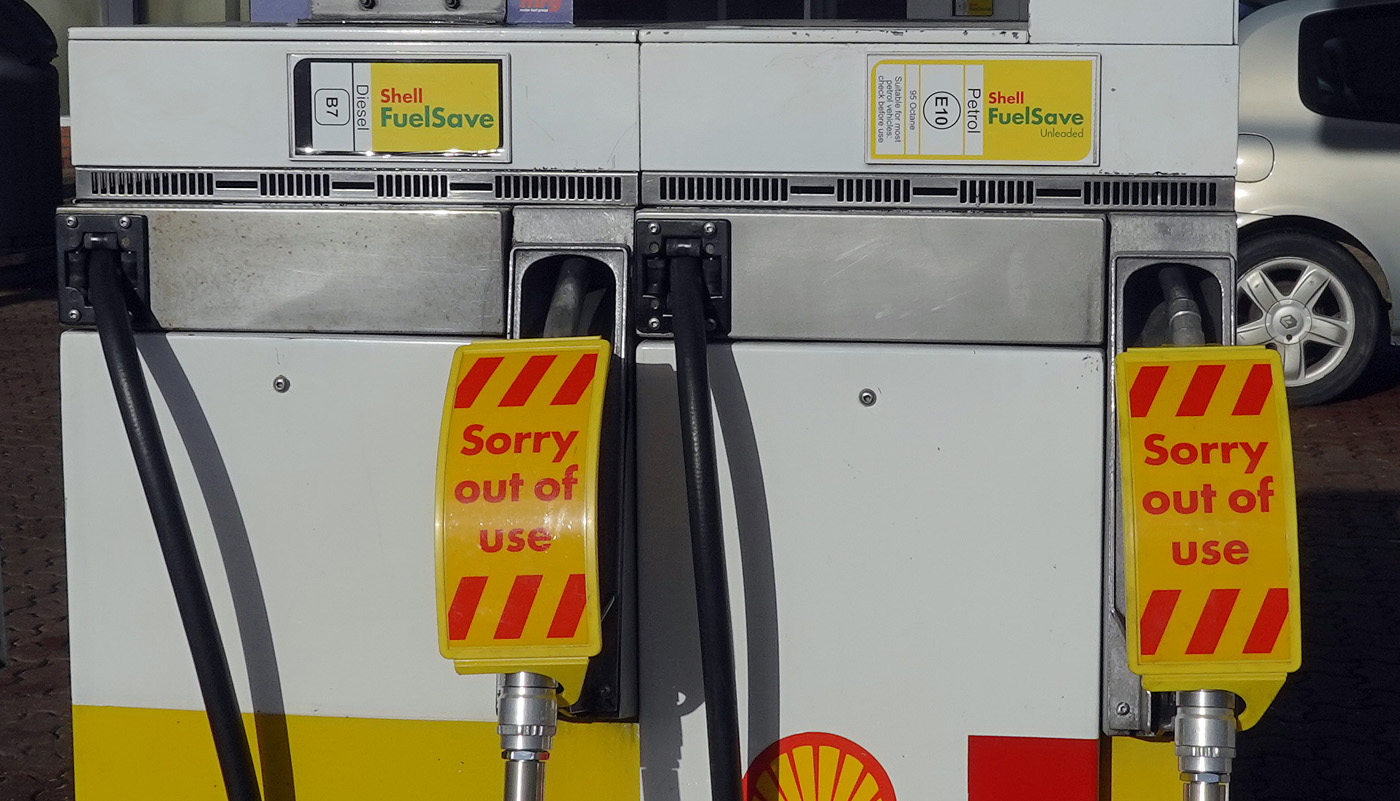 Long queues at petrol pumps, with many filling stations running out of fuel; fears of shortages of food and various other items in supermarkets; orders by shops and warehouses unfilled or delayed. These have been some of the headlines in the UK in recent days.
Long queues at petrol pumps, with many filling stations running out of fuel; fears of shortages of food and various other items in supermarkets; orders by shops and warehouses unfilled or delayed. These have been some of the headlines in the UK in recent days.
The immediate problem is a shortage of over 100 000 lorry drivers, with thousands of drivers from EU countries, who were previously living and working in the UK, having returned to their home countries. Their numbers have not been replaced by British drivers, a problem exacerbated by a decline in HGV tests during the pandemic. Thus the supply of lorry drivers has fallen.
At the same time, as the economy recovers from the COVID-19 pandemic, aggregate demand has risen and with it the demand for lorry drivers.
The shortage is pushing up wages somewhat, but not enough to eliminate the shortage. What is more, the supply of lorry drivers is relatively wage inelastic: a higher wage does not attract many more drivers into the market. Also the demand is also relatively wage inelastic: a higher wage does not do much to dampen the demand for drivers.
But why has this happened? Why has the supply of drivers fallen and why is it inelastic? And what will happen in the coming months? The three main causes are Brexit, COVID-19 and working conditions.
Brexit
 With Brexit, many EU workers left the UK, finding life and working conditions more conducive in the EU. Many EU drivers had faced discrimination and felt that they were not welcome in the UK. It has been difficult finding replacement drivers from the EU as the UK’s immigration system, which now applies to the EU as well as other countries, prioritises workers who are classified as high-skilled, and these do not include lorry drivers.
With Brexit, many EU workers left the UK, finding life and working conditions more conducive in the EU. Many EU drivers had faced discrimination and felt that they were not welcome in the UK. It has been difficult finding replacement drivers from the EU as the UK’s immigration system, which now applies to the EU as well as other countries, prioritises workers who are classified as high-skilled, and these do not include lorry drivers.
Those EU drivers who do want to stay as UK residents are finding that settled status or visas are not easy to achieve and involve filling in various documents, which can be an onerous and time-consuming process. As the writer of the first linked bog below, who is a Polish worker in the transport industry, states, ‘Would you rather come to Britain and jump through all the hoops, or choose any of the well-paying EU countries, for example, Germany that, if you live in Western Poland, is just a short drive across (virtually non-existent thanks to Schengen) border?’ Another problem is that with EU driving licences: it is harder for potential employers to check on their status and thus they may prefer to employ UK drivers. This, again, puts off EU drivers from seeking to stay in the UK.
Even in the case of EU drivers living in the EU but delivering to the UK there are problems. First there are the dangers for drivers of boarding ferries in France, where people from migrant camps seek to board lorries to get passage to the UK, often threatening drivers. If illegal migrants do succeed in boarding a trailer unseen by the driver, the driver can then be arrested in the UK. According to the Polish blogger, it’s ‘no surprise that I hear more and more drivers who, when taking on new jobs, demand guarantees from their employers that they won’t be sent to the UK’.
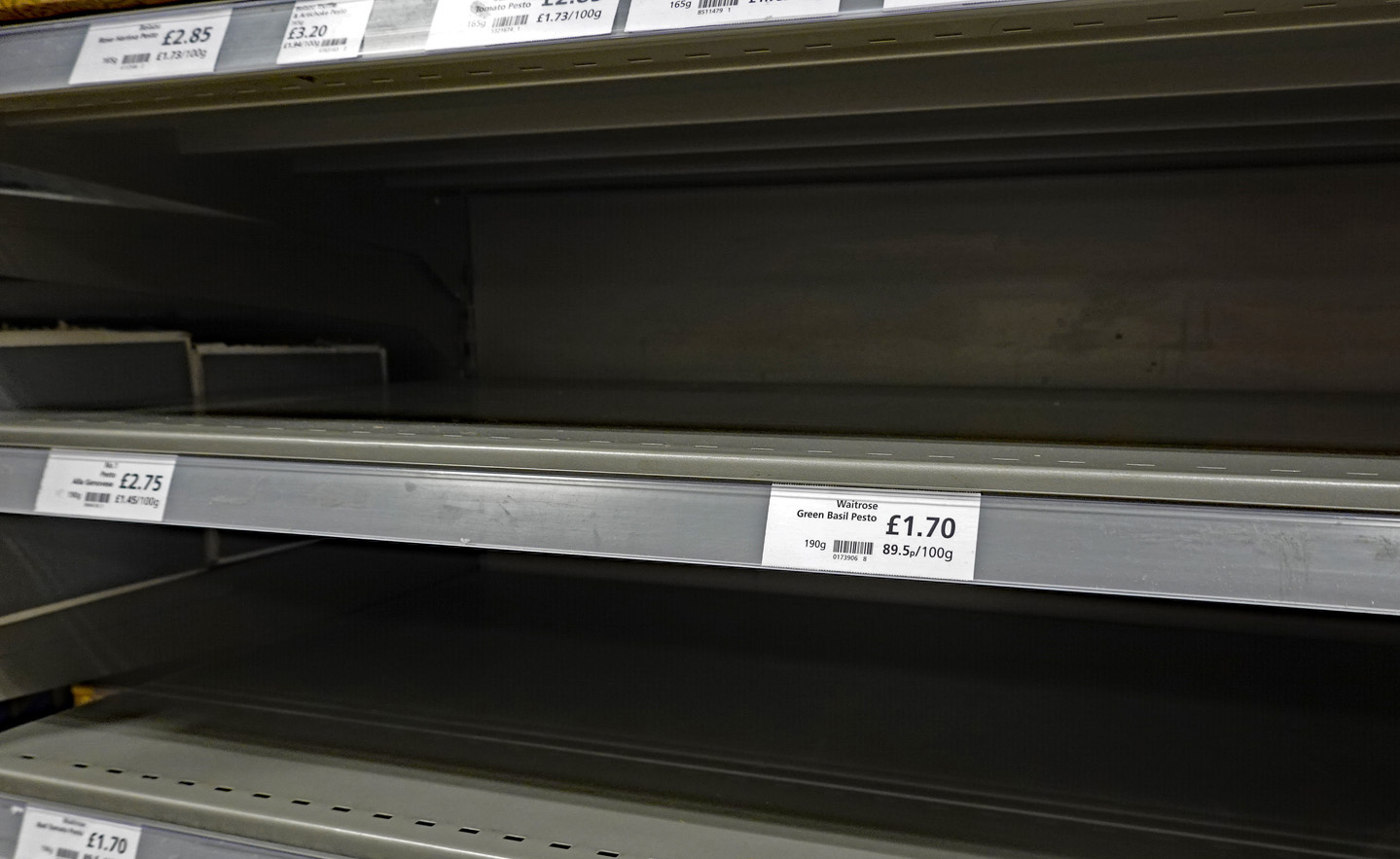 Then there is a decline in the system known as ‘cabotage’. This is where an EU driver delivers from the EU to destination A in the UK and takes back a load to the EU from destination B in the UK. To avoid having to travel empty between the two UK destinations, the driver could pick up a load to take from A to B. With a fall in imports and exports from and to the EU following Brexit, there are fewer EU lorries on UK roads. This means that there is now less capacity for transporting loads within the UK.
Then there is a decline in the system known as ‘cabotage’. This is where an EU driver delivers from the EU to destination A in the UK and takes back a load to the EU from destination B in the UK. To avoid having to travel empty between the two UK destinations, the driver could pick up a load to take from A to B. With a fall in imports and exports from and to the EU following Brexit, there are fewer EU lorries on UK roads. This means that there is now less capacity for transporting loads within the UK.
There has also been a large rise in ‘red tape’ associated with post-Brexit customs checks and border controls. This means that lorries can be held up at ports. This makes it much less attractive for EU haulage companies to export to the UK rather than to other EU countries, where paperwork is minimal. In addition, m many drivers are paid by the length of the journey rather than by the time spent, so delays result in them earning less per hour. Full checks have not been introduced yet. When they are, in January and July next year, the problem will be worse.
Tax changes make it more difficult for drivers to avoid taxes by claiming that they are self employed when they are in reality employees. This too is discouraging drivers from the EU from moving to or staying in the UK since many would now (since April 2021) be paying more tax.
COVID-19
Another contributing factor to the shortage of drivers has been COVID-19 and the government’s response to it. COVID rates are considerably higher in the UK than in most EU countries and, not surprisingly, many EU drivers are afraid to come to the UK.
 The pandemic led to fewer HGV driver tests, with 25 000 fewer candidates passing their test in 2020 than in 2019. It takes time to train new drivers and then to test them. However, even if there had been no reduction in HGV drivers passing their tests, there would still be a significant shortage of qualified drivers.
The pandemic led to fewer HGV driver tests, with 25 000 fewer candidates passing their test in 2020 than in 2019. It takes time to train new drivers and then to test them. However, even if there had been no reduction in HGV drivers passing their tests, there would still be a significant shortage of qualified drivers.
A further problem with the effects of COVID-19 on the economy has been the initial recession and then the bounce back. The sheer size of the bounce back has exacerbated the problem of driver shortages, which otherwise would have been slower to develop, giving the market more time to respond. Real GDP grew by 5.5% from 2021 Q1 to 2021 Q2, giving an annual growth rate of 23.6%. Nevertheless, GDP was still some 3.3% below its 2019 Q3 level.
Pay and working conditions
Working conditions are very poor for many drivers. The following are common complaints:
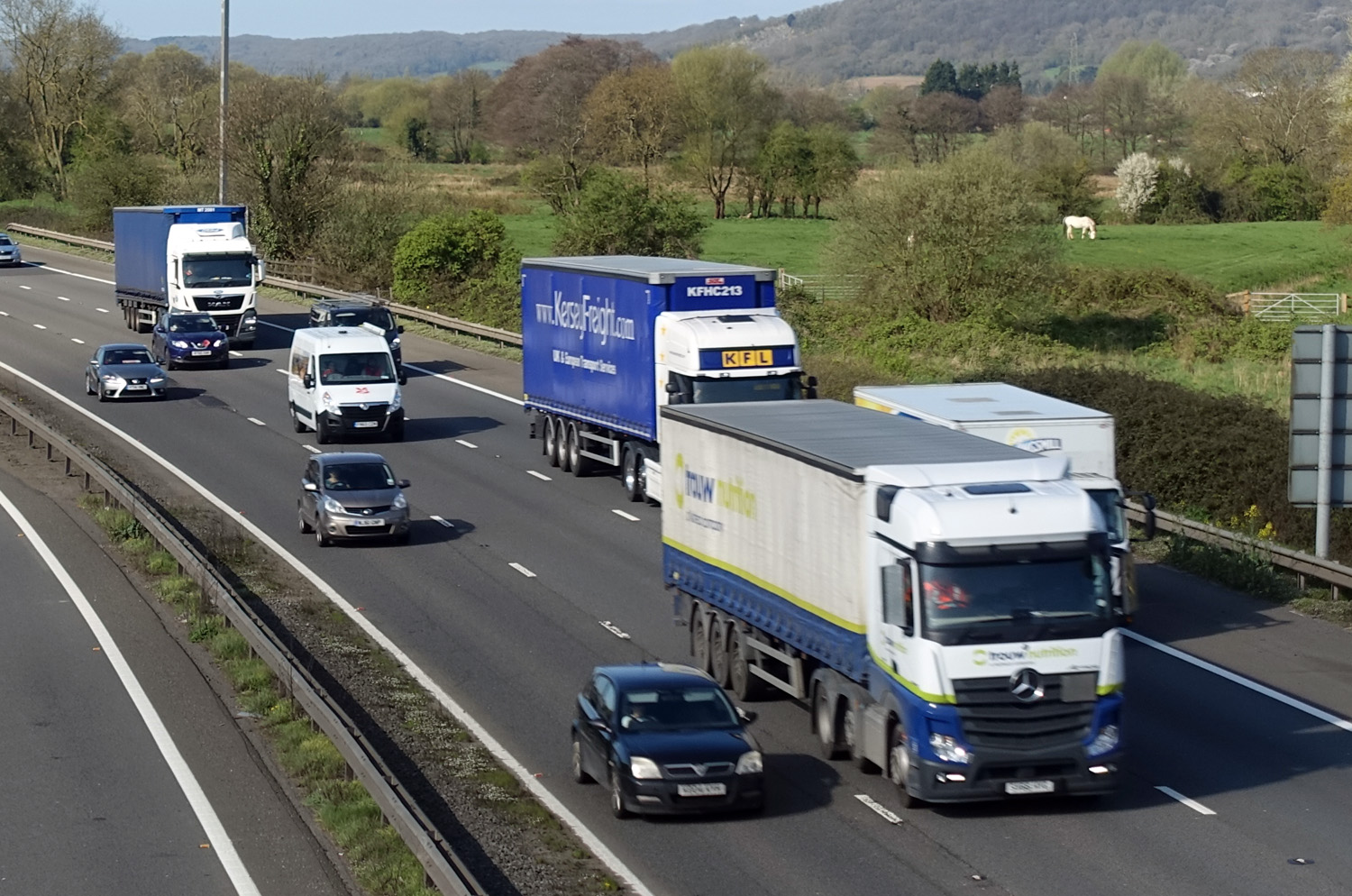 Driving jobs are often very tightly controlled, with computer monitoring and little freedom for the driver. Some cabs have cameras aimed at the drivers so that they can be constantly monitored.
Driving jobs are often very tightly controlled, with computer monitoring and little freedom for the driver. Some cabs have cameras aimed at the drivers so that they can be constantly monitored.- Drivers are subject to very stringent health and safety regulations, such as not being allowed to drive longer than a certain time, even when they are queuing in congested traffic. Whilst many of these regulations are desirable to protect both the public’s and the driver’s safety, they can discourage drivers from entering or staying in the industry. And some regulations are hard to justify on safety grounds (see second linked article below, point 13).
- Just-in-time deliveries at supermarkets, regional distribution centres (warehouses) or factories make timing very important and add considerable stress to drivers who may face abuse if they are late, even though it was not their fault, with their employer perhaps facing a fine. And yet on other occasions they might have to wait a long time to offload if drivers before them have been delayed, and often the conditions in waiting areas are poor with few if any facilities.
- Drivers often feel a lack of respect from employers, trainers and the general public.
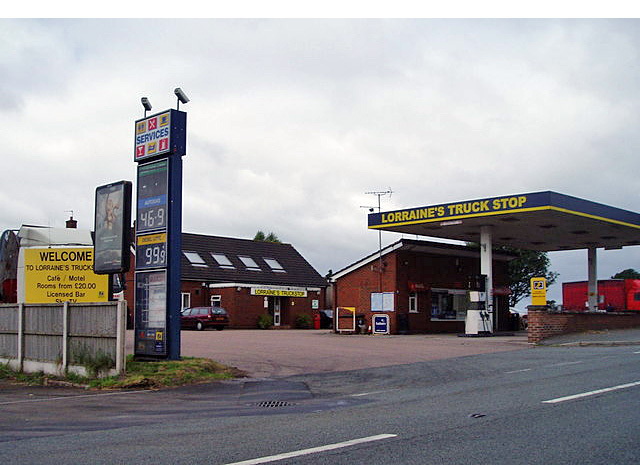 Rest and refreshment facilities are often very poor in the UK and generally much worse than in the EU. In the EU, motorway service areas have better parking, toilets, showers and shops. Restaurants are better and cheaper. Dedicated truck stops have supermarkets, laundrettes, showers or even open-air gyms dedicated to making drivers’ lives easier and more pleasant. The UK by contrast often has very poor facilities. Unlike in most EU motorway services, drivers have to pay to park and are faced with poor toilet and eating facilities. ‘Meanwhile, a typical British truck stop is some dusty yard full of potholes on the side of some industrial estate with a portaloo and a “greasy spoon” burger van parked next to it.’
Rest and refreshment facilities are often very poor in the UK and generally much worse than in the EU. In the EU, motorway service areas have better parking, toilets, showers and shops. Restaurants are better and cheaper. Dedicated truck stops have supermarkets, laundrettes, showers or even open-air gyms dedicated to making drivers’ lives easier and more pleasant. The UK by contrast often has very poor facilities. Unlike in most EU motorway services, drivers have to pay to park and are faced with poor toilet and eating facilities. ‘Meanwhile, a typical British truck stop is some dusty yard full of potholes on the side of some industrial estate with a portaloo and a “greasy spoon” burger van parked next to it.’- Hours are long. Even though driving hours are restricted to 10 hours per day (recently extended to 11 hours), the average working day may be much longer as drivers have to wait at distribution centres, fill in increasing amounts of paperwork and help load or unload their vehicle. Also drivers may have to work variable shifts, which leads to disturbed sleeping patterns.
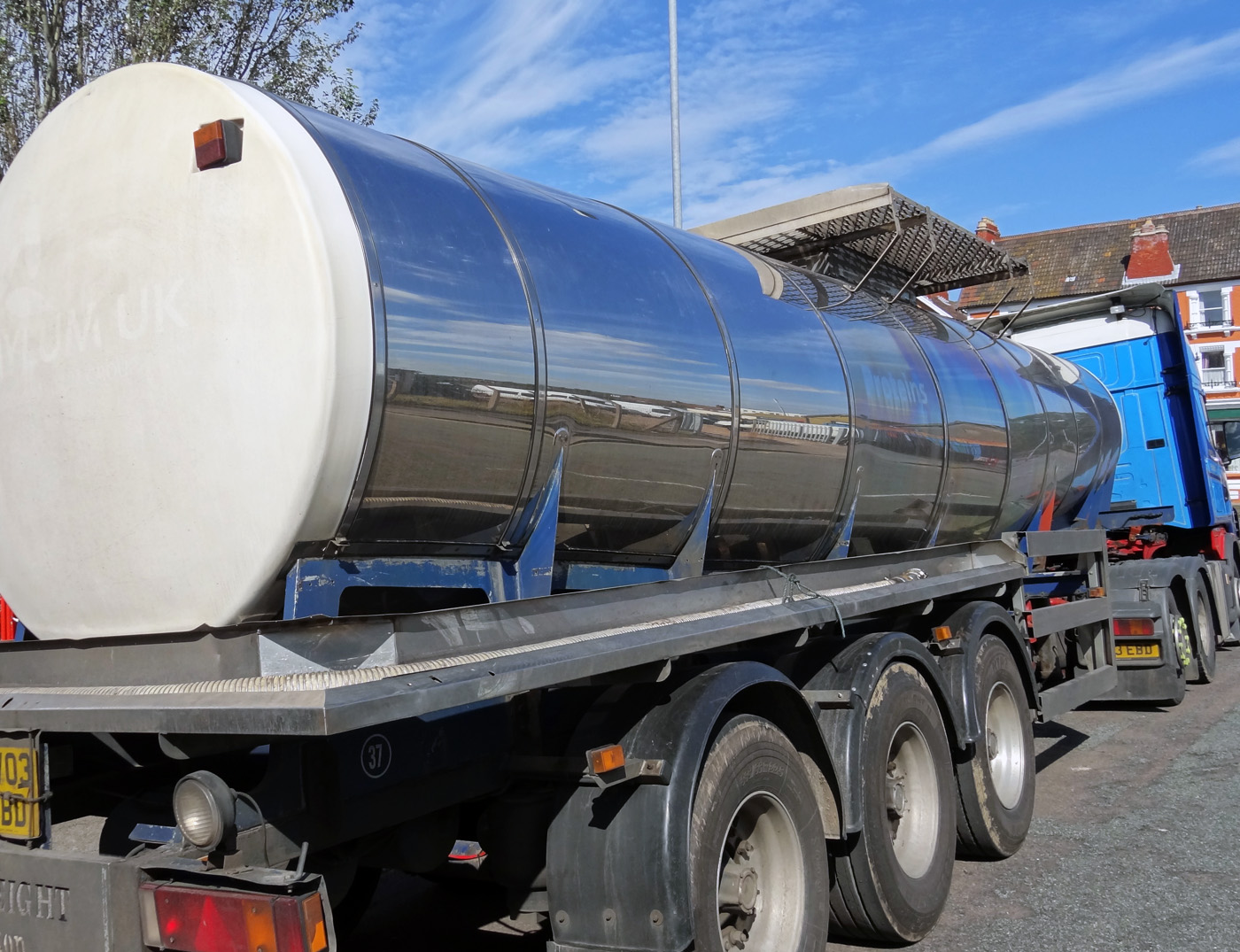 The work is often physically demanding, especially when a large part of the job involves loading and unloading and moving items from the lorry to where the customer wants them.
The work is often physically demanding, especially when a large part of the job involves loading and unloading and moving items from the lorry to where the customer wants them.- Many vehicles are hard and unpleasant to drive, with leased vehicles often low-spec, dirty, uncomfortable and poorly maintained.
- Many of the jobs are agency jobs that do not offer stable employment.
Although pay is higher than in some parts of the labour market where there are shortages, such as social care and hospitality, pay per hour is still relatively poor when compared with many industries which have better conditions of employment.
The future
 The government is allowing more foreign workers into the UK from this month (October); more training places will be offered for potential drivers and the number of driving tests will increase; the government is also encouraging retired drivers or those who have left driving for other jobs to return to the industry.
The government is allowing more foreign workers into the UK from this month (October); more training places will be offered for potential drivers and the number of driving tests will increase; the government is also encouraging retired drivers or those who have left driving for other jobs to return to the industry.
However, there are shortages of drivers in other EU countries and so it will be difficult to attract additional drivers to the UK from the EU. What is more, with wages and working conditions remaining poor and the labour market remaining tight in other sectors, it might be hard to fill new training places and encourage workers to return to driving. Also, with the average age of drivers being 55, it is likely that the outflow of workers from driving jobs could be large in the coming years.
Articles
- Twenty reasons why there is an HGV driver shortage – part one: 1-10
West Country Bylines, Tomasz Oryński (21/9/21)
- Twenty reasons why there is an HGV driver shortage – part 2: reasons 11-20
West Country Bylines, Tomasz Oryński (23/9/21)
- Gas Shortages Awaken Britain to Some Crucial Workers: Truck Drivers
New York Times, Eshe Nelson and Megan Specia (29/9/21)
- Time running out to save UK industry from worker shortages, say business leaders
CNN, Walé Azeez (1/10/21)
- Boris Johnson’s Brexit choices are making Britain’s fuel and food shortages worse
CNN, Hanna Ziady (29/9/21)
- How serious is the shortage of lorry drivers?
BBC News, Reality Check Team (28/9/21)
- Petrol shortage: Is the fuel crisis improving?
BBC News (1/10/21)
- UK visa plan will not fix lorry driver shortage, says boss
BBC News (28/9/21)
- The empty shelves crisis isn’t just down to Covid and Brexit – it’s been decades in the making
The Guardian, Felicity Lawrence (17/9/21)
- Emergency visa scheme extended in major U-turn by Boris Johnson
The Guardian, Rajeev Syal (1/10/21)
- Truck driver shortage won’t be solved by quick fix visas – here are three ways forward
The Conversation, Temidayo Akenroye (27/9/21)
- UK lorry driver shortage a stark example of a wider European problem
Euronews, Luke Hurst and Shona Murray (29/9/21)
- Emergency visas won’t tempt European lorry drivers to UK, say haulage chiefs
The Observer, Jon Henley, Michael Savage and James Tapper (25/9/21)
- Labour shortage threatens to cancel out any Brexit dividend
British Meat Processors Association, Industry News, Peter Hardwick (28/9/21)
- How to control a consumer panic
BBC News. Faisal Islam (28/9/21)
Questions
- Why are the supply of and demand for lorry drivers relatively wage inelastic?
- Use a marginal productivity diagram to explain the current situation in the market for lorry drivers.
- What policy measures could be adopted to increase the supply of lorry drivers? How successful would these be?
- Is it ‘rational’ for consumers to ‘panic buy’ fuel and other products in short supply?
- Find out why there is a shortage of lorry drivers in the EU. Are any of the explanations similar to those in the UK?
- What are the macroeconomic implications of a shortage of lorry drivers and other key workers?
 In a post at the end of 2019, we looked at moves around the world to introduce a four-day working week, with no increase in hours on the days worked and no reduction in weekly pay. Firms would gain if increased worker energy and motivation resulted in a gain in output. They would also gain if fewer hours resulted in lower costs.
In a post at the end of 2019, we looked at moves around the world to introduce a four-day working week, with no increase in hours on the days worked and no reduction in weekly pay. Firms would gain if increased worker energy and motivation resulted in a gain in output. They would also gain if fewer hours resulted in lower costs.
Workers would be likely to gain from less stress and burnout and a better work–life balance. What is more, firms’ and workers’ carbon footprint could be reduced.
In New Zealand, Unilever has begun a one-year experiment to allow all 81 of its employees to work one day less each week and no more hours per day. This, it argues, might boost productivity and improve employees’ work-life balance.
 The biggest experiment so far has been in Iceland. From 2015 to 2019 more than 2500 people took part in a pilot programme (about 1 per cent of Iceland’s working population). This involved reducing the working week to four days and reducing hours worked from 40 hours per week to 35 or 36 hours with no reduction in weekly pay.
The biggest experiment so far has been in Iceland. From 2015 to 2019 more than 2500 people took part in a pilot programme (about 1 per cent of Iceland’s working population). This involved reducing the working week to four days and reducing hours worked from 40 hours per week to 35 or 36 hours with no reduction in weekly pay.
Analysis of the results of the trial, published in July 2021, showed that output remained the same or improved in the majority of workplaces.
As a result of agreements struck with unions since the end of the pilot programme, 86% of Iceland’s workforce have either moved to shorter hours for the same pay or will gain the right to do so.
Many companies and public-sector employers around the world are considering reducing hours or days worked. With working patterns having changed for many employees during the pandemic, employers may now be more open to rethinking ways of deploying their workforce more productively. And this may involve rethinking worker motivation and welfare.
Articles
Report
Questions
- Distinguish between different ways of measuring labour productivity.
- Summarise the results of the Iceland pilot.
- In what ways may reducing working hours reduce a firm’s total costs?
- What are the advantages and disadvantages of the government imposing (at some point in the future) a maximum working week or a four-day week?
- What types of firm might struggle in introducing a four-day week or a substantially reduced number of hours for full-time employees?
- What external benefits and costs might arise from a shorter working week?
 On March 23, Rishi Sunak, the UK’s Chancellor of the Exchequer, delivered his Spring Statement, in which he announced changes to various taxes and grants. These measures were made against the background of rising inflation and falling living standards.
On March 23, Rishi Sunak, the UK’s Chancellor of the Exchequer, delivered his Spring Statement, in which he announced changes to various taxes and grants. These measures were made against the background of rising inflation and falling living standards.  The Chancellor announced a number of measures, which, he argued, would provide relief from rises in the cost of living.
The Chancellor announced a number of measures, which, he argued, would provide relief from rises in the cost of living. The Chancellor announced that public finances are stronger than previously forecast. The rapid growth in tax receipts has reduced public-sector borrowing from £322 billion (15.0 per cent of GDP) in 2020/21 to an expected £128 billion (5.4 per cent of GDP) in 2021/22, £55 billion less than the OBR forecast in October 2021. This reflects not only the growth in the economy, but also inflation, which results in fiscal drag.
The Chancellor announced that public finances are stronger than previously forecast. The rapid growth in tax receipts has reduced public-sector borrowing from £322 billion (15.0 per cent of GDP) in 2020/21 to an expected £128 billion (5.4 per cent of GDP) in 2021/22, £55 billion less than the OBR forecast in October 2021. This reflects not only the growth in the economy, but also inflation, which results in fiscal drag. With incomes of the poor not keeping pace with inflation, many people are facing real hardship. While the Spring Statement will provide a small degree of support to the poor through cuts in fuel duty and the rise in the NI threshold, the measures are poorly targeted. Rather than cutting fuel duty by 5p, a move that is regressive, removing or reducing the 5% VAT on gas and electricity would have been a progressive move.
With incomes of the poor not keeping pace with inflation, many people are facing real hardship. While the Spring Statement will provide a small degree of support to the poor through cuts in fuel duty and the rise in the NI threshold, the measures are poorly targeted. Rather than cutting fuel duty by 5p, a move that is regressive, removing or reducing the 5% VAT on gas and electricity would have been a progressive move. Consumers would not normally notice price rises from month to month. However, prices are now rising so quickly that it is clear for everyone to see. What is more, average pay is not keeping up. There are workers in a few sectors, such as lorry drivers, who are in high demand, and therefore their wages are rising faster than prices. But the majority of workers won’t see such increases in pay. In the 12 months to January, prices rose by 5.5% on average, but regular pay, excluding bonuses, on average rose by only 4.7%, meaning that they fell by 0.8% in real terms.
Consumers would not normally notice price rises from month to month. However, prices are now rising so quickly that it is clear for everyone to see. What is more, average pay is not keeping up. There are workers in a few sectors, such as lorry drivers, who are in high demand, and therefore their wages are rising faster than prices. But the majority of workers won’t see such increases in pay. In the 12 months to January, prices rose by 5.5% on average, but regular pay, excluding bonuses, on average rose by only 4.7%, meaning that they fell by 0.8% in real terms. Oil prices slumped at the start of the pandemic, but demand has rocketed back since, and oil prices have hit a seven-year high. The price of gas has also shot up, leaving people around the world with eye-watering central heating bills. Home energy bills in the UK are set to rise by 54% in April when Ofgem, the energy regulator, raises the price cap.
Oil prices slumped at the start of the pandemic, but demand has rocketed back since, and oil prices have hit a seven-year high. The price of gas has also shot up, leaving people around the world with eye-watering central heating bills. Home energy bills in the UK are set to rise by 54% in April when Ofgem, the energy regulator, raises the price cap. More costly imports are also contributing to higher prices. New post-Brexit trading rules are estimated to have reduced imports from the EU to the UK by about a quarter in the first half of 2021. In the USA, import tariffs on Chinese goods have almost entirely been passed on to US customers in the form of higher prices. Chinese telecoms giant Huawei said last year that sanctions imposed on the company by the USA in 2019 were affecting US suppliers and global customers.
More costly imports are also contributing to higher prices. New post-Brexit trading rules are estimated to have reduced imports from the EU to the UK by about a quarter in the first half of 2021. In the USA, import tariffs on Chinese goods have almost entirely been passed on to US customers in the form of higher prices. Chinese telecoms giant Huawei said last year that sanctions imposed on the company by the USA in 2019 were affecting US suppliers and global customers. Private rents are also rising at their fastest rate in five years, intensifying the increase in the cost of living for millions of households. Data from the ONS reveal that the average cost of renting in the UK rose by 2% in 2021. This was the largest annual increase since 2017. The East Midlands had the biggest increase in average rental prices, with tenants paying 3.6% more than a year earlier. However, due to falling demand for city flats during lockdown, as people favoured working from home, London had the smallest increase at 0.1%. Nevertheless, as Covid restrictions are removed, renters, including office workers and students, are now returning back to cities. This is now pushing up rental prices with demand outpacing supply.
Private rents are also rising at their fastest rate in five years, intensifying the increase in the cost of living for millions of households. Data from the ONS reveal that the average cost of renting in the UK rose by 2% in 2021. This was the largest annual increase since 2017. The East Midlands had the biggest increase in average rental prices, with tenants paying 3.6% more than a year earlier. However, due to falling demand for city flats during lockdown, as people favoured working from home, London had the smallest increase at 0.1%. Nevertheless, as Covid restrictions are removed, renters, including office workers and students, are now returning back to cities. This is now pushing up rental prices with demand outpacing supply.  With the bounce-back from the pandemic, many countries have experienced supply-chain problems. For example, the shortage of lorry drivers in the UK and elsewhere (see the blog
With the bounce-back from the pandemic, many countries have experienced supply-chain problems. For example, the shortage of lorry drivers in the UK and elsewhere (see the blog  If supply chains become unreliable, however, JIT can lead to serious disruptions. A hold-up in one part of the chain will have a ripple effect along the whole chain because there is little or no slack in the system. When the large container ship, the Ever Given, en route from Malaysia to Felixtowe, was wedged in the Suez canal for six days in March this year, the blockage caused shipping to be backed up. By day six, 367 container ships were waiting to transit the canal. The disruption to supply cost some £730m.
If supply chains become unreliable, however, JIT can lead to serious disruptions. A hold-up in one part of the chain will have a ripple effect along the whole chain because there is little or no slack in the system. When the large container ship, the Ever Given, en route from Malaysia to Felixtowe, was wedged in the Suez canal for six days in March this year, the blockage caused shipping to be backed up. By day six, 367 container ships were waiting to transit the canal. The disruption to supply cost some £730m.  Long queues at petrol pumps, with many filling stations running out of fuel; fears of shortages of food and various other items in supermarkets; orders by shops and warehouses unfilled or delayed. These have been some of the headlines in the UK in recent days.
Long queues at petrol pumps, with many filling stations running out of fuel; fears of shortages of food and various other items in supermarkets; orders by shops and warehouses unfilled or delayed. These have been some of the headlines in the UK in recent days.  With Brexit, many EU workers left the UK, finding life and working conditions more conducive in the EU. Many EU drivers had faced discrimination and felt that they were not welcome in the UK. It has been difficult finding replacement drivers from the EU as the UK’s immigration system, which now applies to the EU as well as other countries, prioritises workers who are classified as high-skilled, and these do not include lorry drivers.
With Brexit, many EU workers left the UK, finding life and working conditions more conducive in the EU. Many EU drivers had faced discrimination and felt that they were not welcome in the UK. It has been difficult finding replacement drivers from the EU as the UK’s immigration system, which now applies to the EU as well as other countries, prioritises workers who are classified as high-skilled, and these do not include lorry drivers. Then there is a decline in the system known as ‘cabotage’. This is where an EU driver delivers from the EU to destination A in the UK and takes back a load to the EU from destination B in the UK. To avoid having to travel empty between the two UK destinations, the driver could pick up a load to take from A to B. With a fall in imports and exports from and to the EU following Brexit, there are fewer EU lorries on UK roads. This means that there is now less capacity for transporting loads within the UK.
Then there is a decline in the system known as ‘cabotage’. This is where an EU driver delivers from the EU to destination A in the UK and takes back a load to the EU from destination B in the UK. To avoid having to travel empty between the two UK destinations, the driver could pick up a load to take from A to B. With a fall in imports and exports from and to the EU following Brexit, there are fewer EU lorries on UK roads. This means that there is now less capacity for transporting loads within the UK. The pandemic led to fewer HGV driver tests, with 25 000 fewer candidates passing their test in 2020 than in 2019. It takes time to train new drivers and then to test them. However, even if there had been no reduction in HGV drivers passing their tests, there would still be a significant shortage of qualified drivers.
The pandemic led to fewer HGV driver tests, with 25 000 fewer candidates passing their test in 2020 than in 2019. It takes time to train new drivers and then to test them. However, even if there had been no reduction in HGV drivers passing their tests, there would still be a significant shortage of qualified drivers. Driving jobs are often very tightly controlled, with computer monitoring and little freedom for the driver. Some cabs have cameras aimed at the drivers so that they can be constantly monitored.
Driving jobs are often very tightly controlled, with computer monitoring and little freedom for the driver. Some cabs have cameras aimed at the drivers so that they can be constantly monitored. Rest and refreshment facilities are often very poor in the UK and generally much worse than in the EU. In the EU, motorway service areas have better parking, toilets, showers and shops. Restaurants are better and cheaper. Dedicated truck stops have supermarkets, laundrettes, showers or even open-air gyms dedicated to making drivers’ lives easier and more pleasant. The UK by contrast often has very poor facilities. Unlike in most EU motorway services, drivers have to pay to park and are faced with poor toilet and eating facilities. ‘Meanwhile, a typical British truck stop is some dusty yard full of potholes on the side of some industrial estate with a portaloo and a “greasy spoon” burger van parked next to it.’
Rest and refreshment facilities are often very poor in the UK and generally much worse than in the EU. In the EU, motorway service areas have better parking, toilets, showers and shops. Restaurants are better and cheaper. Dedicated truck stops have supermarkets, laundrettes, showers or even open-air gyms dedicated to making drivers’ lives easier and more pleasant. The UK by contrast often has very poor facilities. Unlike in most EU motorway services, drivers have to pay to park and are faced with poor toilet and eating facilities. ‘Meanwhile, a typical British truck stop is some dusty yard full of potholes on the side of some industrial estate with a portaloo and a “greasy spoon” burger van parked next to it.’ The work is often physically demanding, especially when a large part of the job involves loading and unloading and moving items from the lorry to where the customer wants them.
The work is often physically demanding, especially when a large part of the job involves loading and unloading and moving items from the lorry to where the customer wants them. The government is allowing more foreign workers into the UK from this month (October); more training places will be offered for potential drivers and the number of driving tests will increase; the government is also encouraging retired drivers or those who have left driving for other jobs to return to the industry.
The government is allowing more foreign workers into the UK from this month (October); more training places will be offered for potential drivers and the number of driving tests will increase; the government is also encouraging retired drivers or those who have left driving for other jobs to return to the industry.  In
In  The biggest experiment so far has been in Iceland. From 2015 to 2019 more than 2500 people took part in a pilot programme (about 1 per cent of Iceland’s working population). This involved reducing the working week to four days and reducing hours worked from 40 hours per week to 35 or 36 hours with no reduction in weekly pay.
The biggest experiment so far has been in Iceland. From 2015 to 2019 more than 2500 people took part in a pilot programme (about 1 per cent of Iceland’s working population). This involved reducing the working week to four days and reducing hours worked from 40 hours per week to 35 or 36 hours with no reduction in weekly pay.